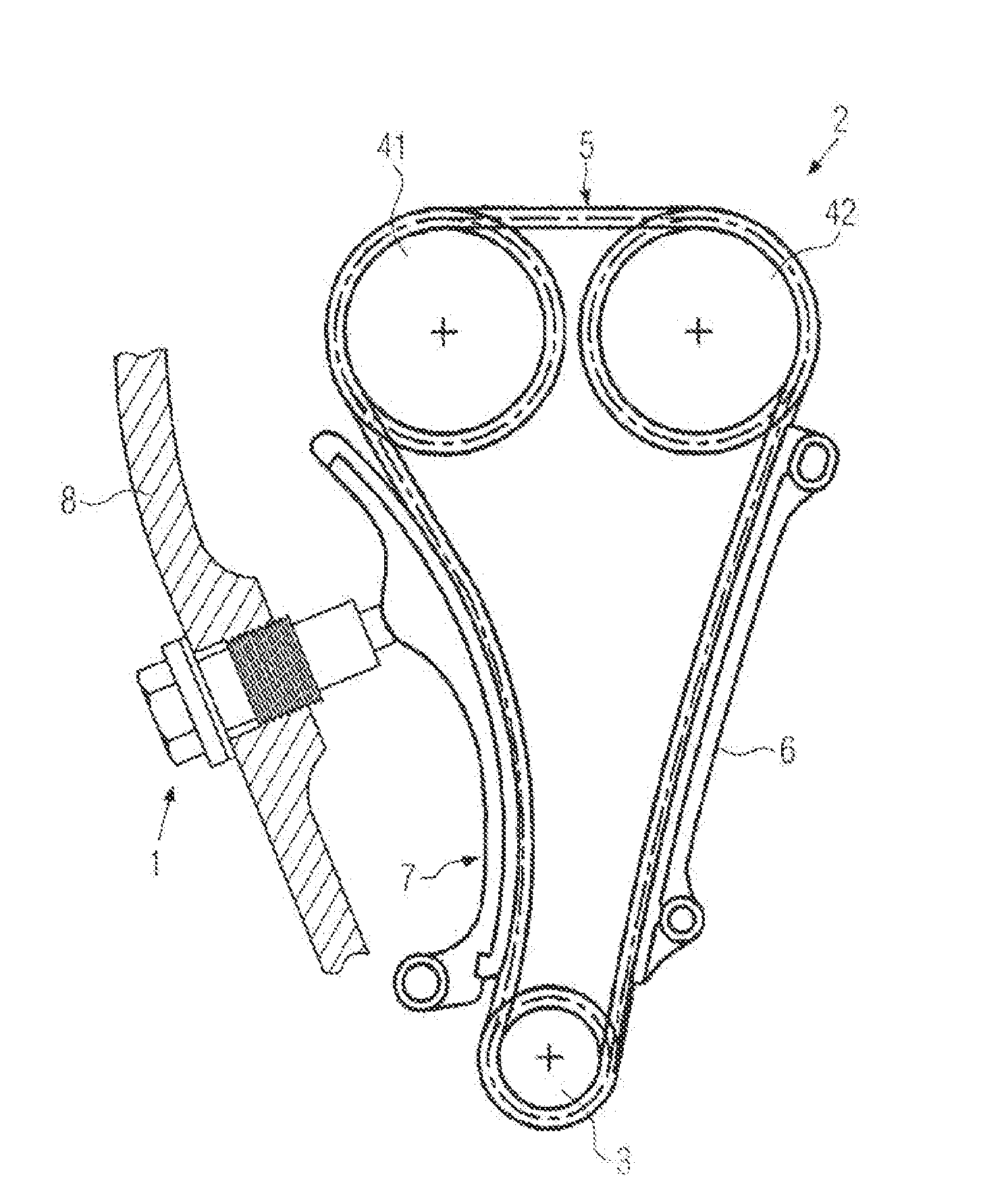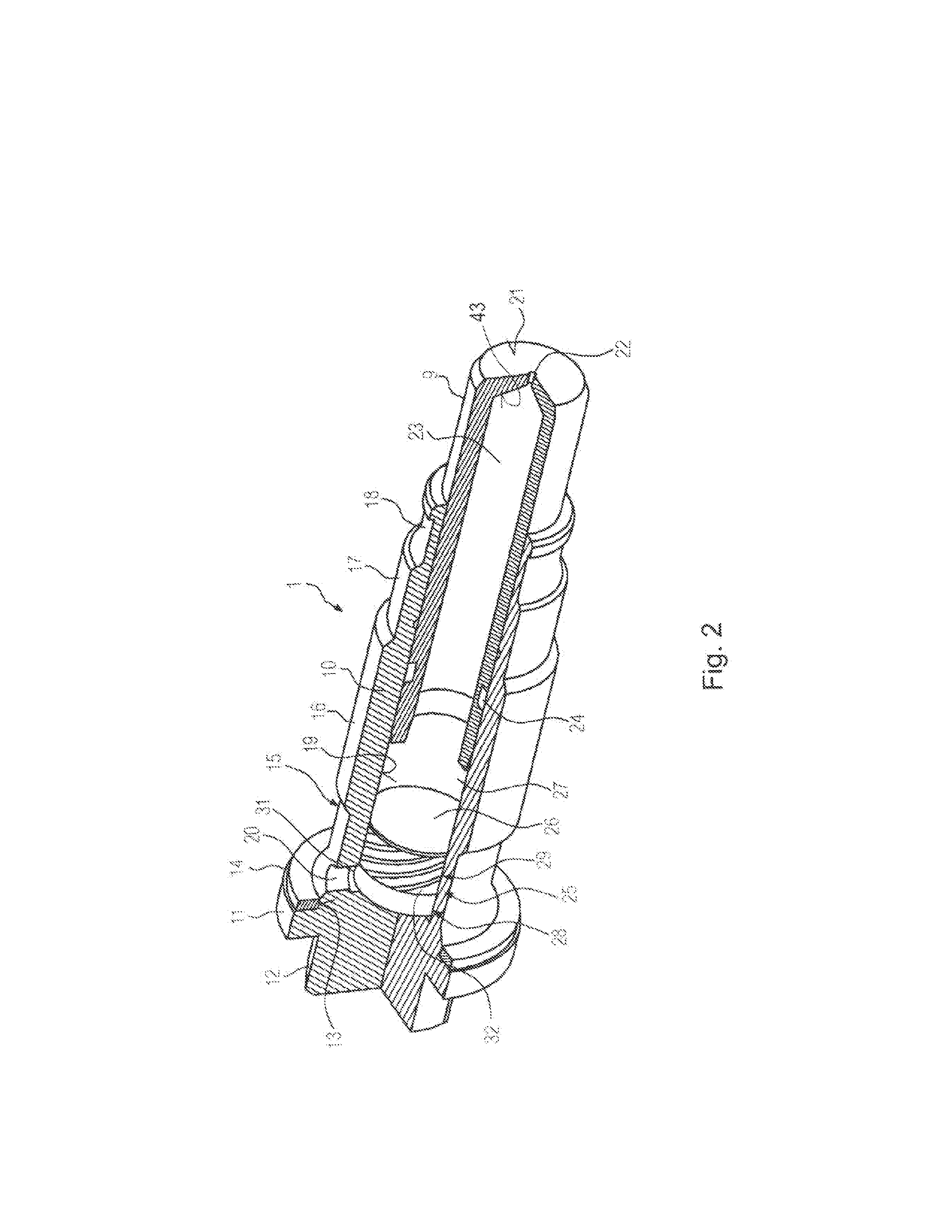Tensioning Device with Damping Channel in the Fluid Supply System
a technology of fluid supply system and tensioning device, which is applied in the direction of mechanical equipment, belts/chains/gearrings, etc., can solve the problems of air accumulation in the pressure reservoir, hydrostatic fluid can incrementally escape, air can negatively affect the function of the tensioning device, etc., and achieves the effect of influencing the damping properties of the damping device, reducing the risk of slipping, and reducing the damping
- Summary
- Abstract
- Description
- Claims
- Application Information
AI Technical Summary
Benefits of technology
Problems solved by technology
Method used
Image
Examples
first embodiment
[0029]FIG. 2 a perspective cross-section view of the screw-in chain tensioner from FIG. 1, where the supply insert is not shown as a cross-section,
[0030]FIG. 3 the back end of the chain tensioner from FIG. 2 in a perspective cross-section diagram, where the supply insert is also shown as a corresponding cross-section,
[0031]FIG. 4 a perspective diagram of the supply insert from FIG. 2 seen from the front, showing the front face,
[0032]FIG. 5 the supply insert from FIG. 4 in a perspective diagram seen from the back,
[0033]FIG. 6 a perspective drawing of a tension spring for use in a screw-in chain tensioner per FIG. 2,
[0034]FIG. 7 a perspective drawing of a packing for use in a screw-in chain tensioner per FIG. 2,
[0035]FIG. 8 a diagram regarding the distribution of the drainage flow from the pressure reservoir as a function of various piston stroke frequencies for the first embodiment,
second embodiment
[0036]FIG. 9 a perspective cross-section view of the screw-in chain tensioner from FIG. 1, where the supply insert is not shown as a cross-section,
[0037]FIG. 10 the back end of the chain tensioner from FIG. 2 in a perspective cross-section diagram, where the supply insert is also shown as a corresponding cross-section,
[0038]FIG. 11 a perspective diagram of the supply insert from FIG. 9 seen from the front, showing the front face,
[0039]FIG. 12 the supply insert from FIG. 11 in a perspective diagram seen from the back,
[0040]FIG. 13 a diagram regarding the distribution of the drainage flow from the pressure reservoir as a function of various piston stroke frequencies for the second embodiment,
[0041]FIG. 14 a diagram showing the distribution of the inflow into the pressure reservoir as a function of various piston stroke frequencies for the second embodiment,
[0042]FIG. 15 a first embodiment of a tensioning device series in a perspective cross-section diagram, where the supply inserts ar...
PUM
 Login to View More
Login to View More Abstract
Description
Claims
Application Information
 Login to View More
Login to View More - R&D
- Intellectual Property
- Life Sciences
- Materials
- Tech Scout
- Unparalleled Data Quality
- Higher Quality Content
- 60% Fewer Hallucinations
Browse by: Latest US Patents, China's latest patents, Technical Efficacy Thesaurus, Application Domain, Technology Topic, Popular Technical Reports.
© 2025 PatSnap. All rights reserved.Legal|Privacy policy|Modern Slavery Act Transparency Statement|Sitemap|About US| Contact US: help@patsnap.com



